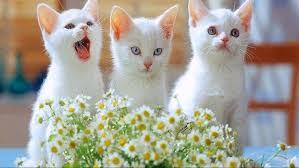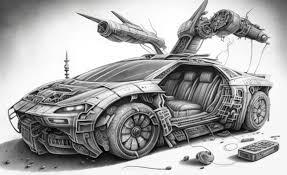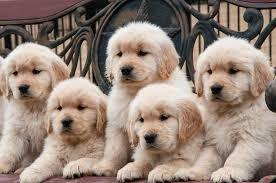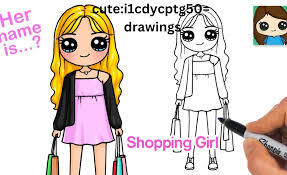Exploring Kawaii Culture: The Adorable World of kawaii:p1ifmjgpipg= cat

Welcome to the whimsical world of kawaii:p1ifmjgpipg= cat! This delightful phenomenon has captured hearts around the globe, bringing a sense of joy and playfulness into our lives. Imagine a universe filled with oversized heads, pastel colors, and all things cute—sounds enchanting, right? Kawaii culture is more than just an aesthetic; it’s a lifestyle that celebrates innocence and charm. From fashion trends to pop music, its influence can be seen everywhere. Join us as we explore this adorable realm and discover what makes kawaii so irresistible!
What is kawaii:p1ifmjgpipg= cat?
Kawaii:p1ifmjgpipg= cat is a charming blend of cuteness that embodies the spirit of kawaii culture. This adorable feline phenomenon features exaggerated facial expressions, oversized eyes, and playful designs. It’s not just about being cute; it’s an art form that celebrates whimsy.
Rooted in Japanese aesthetics, kawaii represents innocence and vulnerability. The kawaii:p1ifmjgpipg= cat perfectly encapsulates this idea with its soft colors and endearing traits. It beckons to those who seek comfort in visuals that evoke happiness.
This delightful creature has become a symbol for various products, from plush toys to fashion accessories. Its popularity extends beyond Japan, resonating globally with fans who embrace its charm. Kawaii:p1ifmjgpipg= cat is more than just an image; it’s a lifestyle choice that invites everyone into a joyful world where cuteness reigns supreme.
The Origins and Evolution of kawaii:p1ifmjgpipg= cat
The kawaii:p1ifmjgpipg= cat phenomenon has roots deeply embedded in Japanese culture. It began gaining traction in the 1970s, when cute characters started to pop up on stationery and toys. This marked a shift towards embracing all things adorable.
As Japan’s economic landscape evolved, so did its artistic expressions. The kawaii aesthetic flourished alongside manga and anime, often featuring exaggerated features like large eyes and small bodies. These cute cats captured hearts worldwide.
In the 1980s and 1990s, iconic brands like Sanrio introduced beloved feline characters such as Hello Kitty. This not only cemented the appeal of kawaii but also set trends in fashion and lifestyle.
Today, kawaii:p1ifmjgpipg= cat continues to evolve with digital art forms and social media platforms amplifying its reach. From plush toys to TikTok videos, this charming subculture adapts while retaining its essence of cuteness that resonates universally.
The Influence of Kawaii on Fashion, Music, and Pop Culture
Kawaii culture has left a significant mark on fashion, transforming the way people express themselves through clothing. Think frilly dresses, oversized accessories, and pastel colors that make anyone feel youthful and playful. Brands like Sanrio have popularized these styles globally.
In music, kawaii influences can be heard in J-pop and K-pop. Artists often incorporate cute aesthetics into their performances and videos. The upbeat melodies paired with adorable visuals create an irresistible charm that captivates audiences.
Pop culture is not immune either. Movies, anime, and gaming all boast kawaii characters that resonate with fans of all ages. These endearing figures bring joy to everyday life while fostering strong community connections among enthusiasts.
From vibrant streetwear to viral TikTok dances featuring kawaii themes, the influence permeates various aspects of modern life. It’s about embracing cuteness while celebrating individuality in unexpected ways.
The Impact of Kawaii on Society
Kawaii culture has subtly woven itself into the fabric of society. It transcends mere aesthetics, influencing how people interact and communicate.
The visual appeal of cuteness fosters a sense of community. Shared love for kawaii characters often brings individuals together, breaking down barriers across age groups and cultures. This communal appreciation helps promote kindness and positivity in daily interactions.
Moreover, kawaii spreads beyond Japan’s borders. Global brands incorporate these elements to attract consumers seeking joy or nostalgia through products that evoke warmth.
In education, educators use kawaii imagery to create engaging learning environments. The adorable visuals can make challenging subjects more approachable for students.
Even social movements have adopted kawaii aesthetics as a tool for activism, softening messages while maintaining powerful narratives that resonate with audiences on an emotional level.
This delightful phenomenon highlights humanity’s enduring need for connection through shared experiences centered around happiness and creativity.
How to Embrace Kawaii in Your Everyday Life
Embracing kawaii culture in your daily life can be a delightful journey. Start with your wardrobe. Incorporate pastel colors, playful prints, and cute accessories into your outfits. Think oversized sweaters featuring adorable characters or fun socks that bring a smile.
Next, consider home decor. Fill your space with plush toys, whimsical artwork, and cheerful cushions. A cozy nook adorned with kawaii elements can brighten up any room.
Food is another avenue for expressing cuteness. Try making bento boxes styled like animals or adding faces to pancakes using fruit slices.
Engage with the community by following kawaii artists on social media or joining online forums dedicated to this charming aesthetic.
Let your creativity flow through DIY projects—crafting personalized items can enhance the thrill of embracing this enchanting style in every aspect of life!
Controversies Surrounding Kawaii
Kawaii culture, while beloved by many, has not been without its controversies. Critics often argue that the obsession with cuteness can promote infantilization in society. This raises questions about maturity and societal expectations.
Furthermore, some claim that kawaii aesthetics may reinforce gender stereotypes. The hyper-feminine imagery prevalent in certain kawaii trends can create unrealistic standards for women, perpetuating the notion that they must embody a specific type of adorableness to be accepted.
Additionally, there is a debate surrounding cultural appropriation. As kawaii elements spread globally, discussions arise about authenticity and respect for Japanese culture versus commercialization.
These tensions highlight the complexity of embracing such an endearing aesthetic while navigating deeper social implications. Kawaii culture continues to evolve amid these conversations, sparking both admiration and critique from various corners of society.
Conclusion: Why We Are Drawn to the Adorable World of kawaii:p1ifmjgpipg= cat
The allure of kawaii:p1ifmjgpipg= cat is undeniable. It captivates our hearts and sparks joy in a world that can often feel overwhelming. The charm lies not just in the adorable aesthetics but also in the emotional connection it fosters. This culture encourages us to embrace playfulness, innocence, and creativity.
Kawaii reminds us of childhood memories filled with wonder and imagination. It invites people from all walks of life to find comfort in cuteness amidst daily stresses. Whether it’s through fashion choices, art, or even music, engaging with kawaii allows for self-expression.
Moreover, the inclusive nature of this culture creates a sense of community among enthusiasts globally. Sharing interests like collectibles or fashion helps form friendships rooted in mutual appreciation for all things cute.
As we navigate our complex lives, turning to something as simple as kawaii:p1ifmjgpipg= cat offers a refreshing perspective. It’s an escape into a world where everything is softer and sweeter—a reminder that there’s always room for joy and whimsy right at our fingertips.





